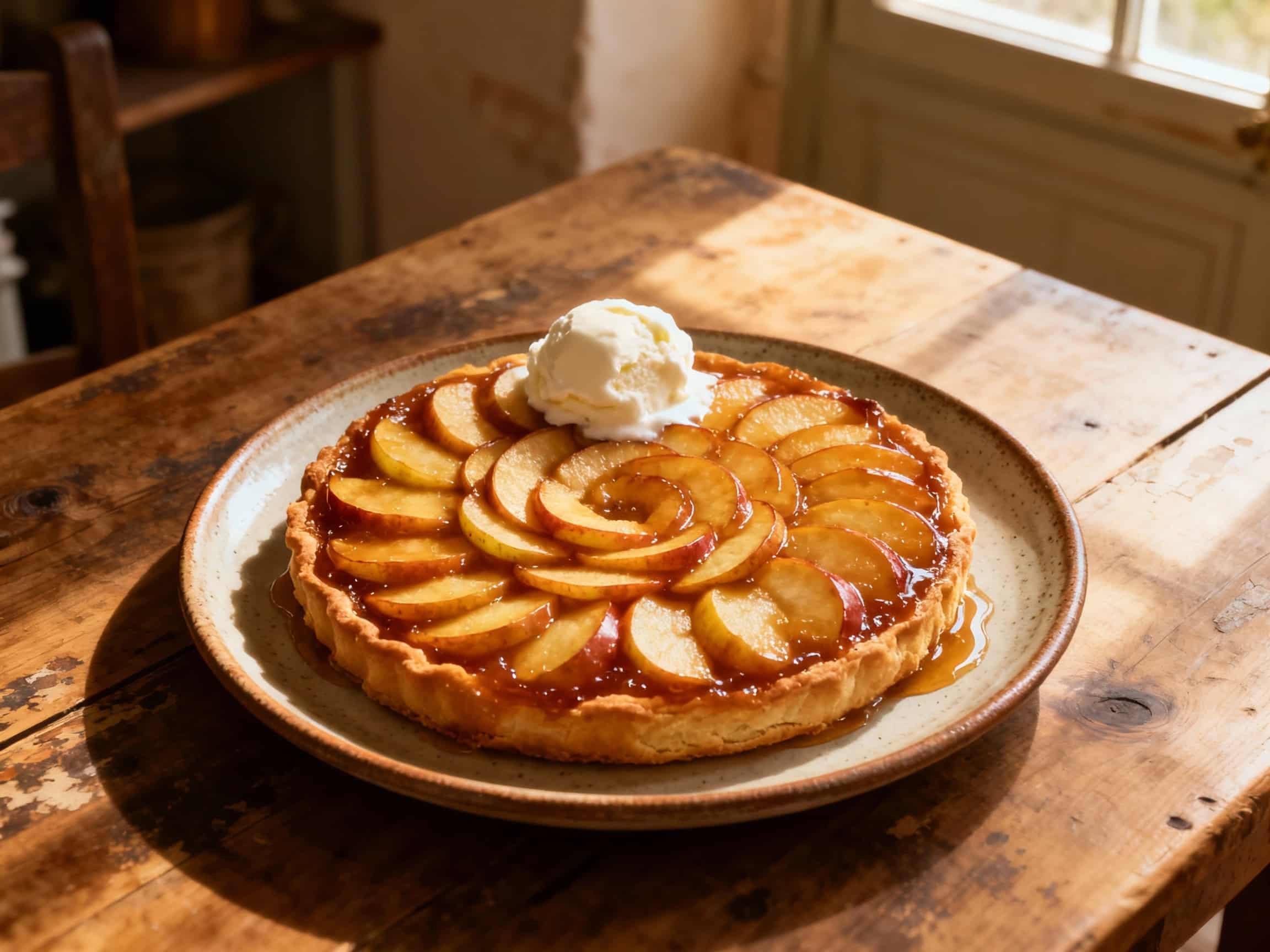
Tarte Tatin
Tarte Tatin
- Country
- France
- Region
- Sologne
- Recipes
- 0 Recipes
Dish information
Tarte Tatin, the famously rustic yet elegant upside-down apple tart, carries a charming origin story rooted in happy accident and sisterly enterprise in the Sologne region of France. Its creation is attributed to the Tatin sisters, Stéphanie and Caroline, who ran the Hôtel Tatin in Lamotte-Beuvron, near Orléans, during the late 19th century. According to the most popular legend, one day around 1898, Stéphanie Tatin, who did most of the cooking, was preparing a traditional apple pie. Overworked and distracted, she either accidentally overcooked the apples for too long in butter and sugar, or dropped the tart, resulting in apples caramelizing intensely. In a flash of improvisation, she simply placed a pastry crust over the top of the apples, baked it, and then inverted the whole thing before serving. To her surprise, and to the delight of her guests, the 'mistake' was a glorious success, creating a beautifully caramelized, rich apple tart. Another version suggests she merely forgot the crust and quickly added it on top, baking it that way, and then flipped it out of habit. The hotel's reputation, already excellent, soared with this distinctive dessert. Parisian diners and gourmets traveling through Sologne sought out the hotel specifically for the Tarte Tatin. Ultimately, a famous Parisian restaurateur, Louis Vaudable from Maxim's, heard about the tart, secured the recipe, and introduced it to his prestigious restaurant, cementing its place in the pantheon of French desserts. Tarte Tatin is celebrated for its glorious caramelized apple topping, rich buttery flavor, and flaky pastry base. It perfectly embodies the spirit of French provincial cooking: resourceful, delicious, and timeless, turning a simple mishap into a culinary legend.
Timeline
Sisters Stéphanie and Caroline Tatin run their hotel-restaurant in Lamotte-Beuvron, France.
Stéphanie Tatin invents the 'tarte des demoiselles Tatin' (Tarte Tatin) by happy accident.
The tart gains popularity in the Sologne region and begins to attract Parisian clientele.
Louis Vaudable, owner of Maxim's in Paris, acquires the recipe and introduces it to wider Parisian society.
Related recipes
0 recipesWe'll add related recipes for this dish soon.